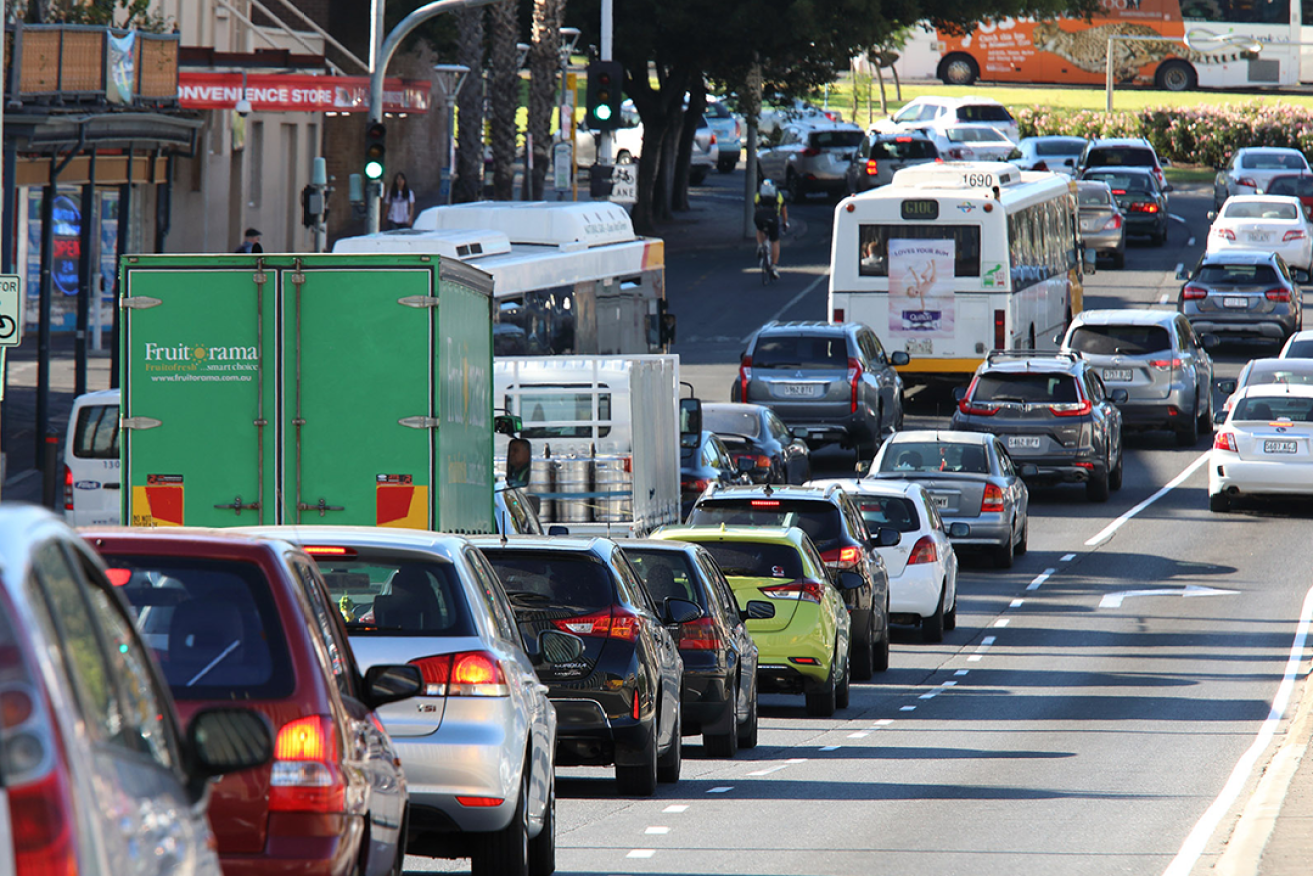How the MAC sale has ripped off South Australians
The privatisation of the Motor Accident Commission’s insurance business was meant to deliver cheaper registrations. However, it’s now clear, argues lawyer Barney Gask, that those savings have all but disappeared while injured South Australians are being ripped off.


South Australian registration costs are on the rise, while the injured get less. Photo: Tony Lewis/InDaily
Imagine you are in a car accident. The impact shatters the bones in your leg. The pain and suffering is unlike anything you have ever felt. A doctor will later tell you the fractures are complex and that surgery is required to insert a nail to give your bones the best chance of healing. All of this places an enormous physical, financial and mental weight on your shoulders for months, maybe years. Will I ever be completely healthy again? Will I work again or perform the same role? How will I pay my bills while I’m off work?
Now imagine what compensation you would be entitled to for all of this pain and suffering, none of which was your fault, as a paid-up registered motorist under South Australian law? The answer is zero. That’s right – zero. It’s hard to believe it’s so in the land of the fair go, but this has been the reality for every South Australian motorist for almost five years now, and we have never been more vulnerable.
How and why did SA fall into such an unbalanced, unfair motor vehicle accident compensation system?
The road to unfairness
On July 1, 2013, two significant legislative changes took place: the Motor Vehicle Accidents (Lifetime Support Scheme) Act 2013 came into operation, and the Civil Liability Act 1936 was amended, changing how damages for injuries were assessed.
The MVA(LSS) Act provided a scheme for the lifetime treatment, care and support of those catastrophically injured in motor vehicle accidents. The introduction of the LSS was a good thing. It was supported by those stakeholders who made submissions to the State Government when the legislative changes were proposed. However, given the scheme intended to provide cover to those catastrophically injured in motor vehicle accidents which were of their own fault, the issue became one of funding.
For many years the State Government has included a Compulsory Third Party levy in motor vehicle registration. When you pay your registration you are automatically covered for any injury caused by you to another person as a result of a motor vehicle accident. The extra cover to be provided by the LSS also had to be funded from registrations. The Government wasn’t going to increase registrations, which were already high compared to other states, so the funds came from cutting back the compensation awarded to people injured in accidents where the injuries were not catastrophic.
Many changes were made to the Civil Liability Act, but the impact on damages for pain and suffering and economic loss is most significant. Under the system that preceded the new Act those injured in accidents were compensated. The awards were not generous or reasonable, but as long as there was a significant impairment for more than seven days, injured people were awarded something.
For all accidents after July 1, 2013, a new methodology applied. There is now an Injury Scale Value (ISV) – from 0-100 – and an injured person is assigned a number based on their injuries.
Unless that number exceeds 10 on the scale there is no entitlement to damages for pain and suffering. But even if an injured person manages to reach the threshold the damages are minimal. For example, in 2013 in South Australia injuries assigned 11 points on the scale received $3000. It is now $3210. In Queensland, where the ISV scale originated, a score of 11 is worth $18,210.
The Government’s response to concerns about the change was that it would only impact those with “minor injuries” (according to a government paper published in November 2012). That paper referred to injuries such as “minor whiplash, soft tissue injuries and fractures not resulting in permanent impairment”. This paper was also published when the threshold was proposed to be 15 or more, rather than 10.
Next to nothing
Almost five years on from the changes, it is evident that people with significant injuries are not reaching the threshold and are receiving nothing by way of damages for pain and suffering. If they reach the threshold, they are receiving far less than what they previously would have received, or compared to what they would receive in other states.
For example, an injury involving complex spiral fractures through the tibia and fibula resulting in surgery to repair the fractures with a nail, along with a medial malleolus fracture, has been assessed at less than 11 on the ISV – so people suffering these injuries get nothing for pain and suffering.
A person with a shattered wrist requiring surgery and fixation of the fractures that renders the person unable to drive for three months is assessed at less than 11 on the ISV – so nothing for pain and suffering.
A person with a fractured patella from a bicycle accident that required open reduction and internal fixation is assessed at less than 11 on ISV – so nothing for pain and suffering.
A person who has sustained what a neurosurgeon has described as a severe brain injury with significant loss of neurons is being assessed under the ISV as a “minor brain injury” given the extent of the recovery, which gives a range of 6-20 on the ISV. At best this might give them $15,000 to $17,000 as compared to $45,000 to $50,000 under the previous legislation.
A below knee amputation gives a range of 31-45 on the ISV which, if at the top of the range, is a lump sum of $65,000. Such an injury would have previously attracted an award of $120,000 to $130,000.
In addition to the significant reduction in damages for pain and suffering, any income loss for the injured person is now reduced by 20 per cent. So if you are injured in an accident which is not your fault, and you are unable to work as a result, you lose 20 per cent of your payment for loss automatically. How is that reasonable or fair?
The “carrot” disappears
Despite the passage of time, there are no cases that have been through the court system such that there is authority that can be relied on when negotiating a resolution of a claim. This has left lawyers and claims managers negotiating based on their own interpretation of the legislation, especially the application of the ISV.
While there is no clear authority, what is clear is awards for pain and suffering are, and will remain, grossly inadequate. What is also clear is that the “carrot” dangled by the Government to lessen the impact of the reduction has disappeared.
This “carrot” was a net $50 saving to motorists in their registration. The “Reforms to Compulsory Third Party Insurance for South Australian motorists” paper from November 2012 confirmed a reduction in the CTP premium in the year from 1 July 2013 from $512 per annum to $402 for a typical passenger car (Class 1). The reduction didn’t last long. The same typical passenger car will this year pay a total registration of $733.00 which is the same, if not more, than what was being paid prior to the changes.
The LSS has confirmed in their annual report from the year 2016/2017 that they had 141.5 participants in the scheme. The actuarial modelling from the LSS was based on 45 new participants per year so the current numbers are less than what was anticipated.
In our registration, we all pay $110 towards the LSS. In that case, we are currently paying $372 of our registration toward CTP insurance. When combined with the LSS fund amount it is almost the same as what we were paying in 2013 before the changes were introduced
So we are now in a situation where injury damages to be paid from that CTP levy are significantly less, yet we are paying the same, if not more, for our registration.
A sceptic would question whether these changes were introduced with one thing in mind – the privatisation of the Motor Accident Commission’s compulsory third party insurance business from 1 July 2016 .
What is clear is that registrations are on the rise, the amount of damages being paid is dropping, and there are four private insurers licking their lips.
Barney Gask is a partner at Adelaide law firm Tindall Gask Bentley.




